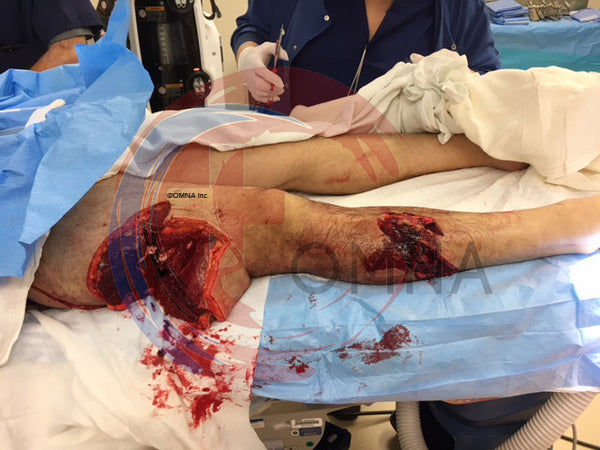OMNA Marine Tourniquet: Sitting, leg straight first, position effects on tourniquet pressure
- omnaincorporated

- Feb 1, 2024
- 2 min read
This video shows one of the OMNA Marine Tourniquet applications that was done as part of the study detailed in the paper Wall P, Buising C, Hingtgen E, White A, Jensen J. Limb position change affects tourniquet pressure. Submitted to the Journal of Special Operations Medicine.
Tourniquet applications were to the thigh, as shown in this video, or the arm, as shown in other videos; the recipient was sitting or laying; and the limb started either bent or straight. The tourniquet was applied to arterial occlusion, as indicated by loss of the Doppler audible pulse signal. The recipient was directed to remain as limb-relaxed as possible throughout and to allow the limb position changes to be passive. The tourniquet applier moved the tourniqueted limb from the initial position (straight in this video) to the second position (bent in this video) and then back to the original position (straight in this video). Pauses of 5 seconds were incorporated between: 1) achievement of arterial occlusion and starting the first passive position change, 2) finishing the first passive position change and starting the second passive position change, and 3) finishing the second passive position change and tourniquet release.
In the video, the collected pressure trace will appear for 5 seconds beginning at the start of the first position change, beginning at the start of the last position change, and beginning 5 seconds from the end of the video. The pressure trace shows the tourniquet pressure beginning with the last advance of the ratcheting buckle that achieves arterial occlusion pressure (labeled “ratcheting buckle advance”). The name of the limb position interval is indicated on the graph below the pressure trace (in this video: “Straight Bent Straight”). The time periods during which the limb was passively positioned are indicated with brackets and text above the pressure trace (“passive position change”).In the thigh applications with a sitting recipient, we noted that the extent of knee extension in the sitting knee straight position was generally visibly slightly less in the tourniquet applications that started with the knee bent (see vimeo.com/490842933) than those that started with the knee straight (this video).
In this video, rhythmic pulsations are visible in the pressure trace.
For data concerning OMNA Marine Tourniquet applications, see Hingtgen E, Wall P, Buising C. OMNA Marine Tourniquet self-application. J Spec Oper Med. 2020;20(3):52–61. For a video OMNA Marine Tourniquet description see vimeo.com/434732616. For a characterization of the pressure measuring system, see Hingtgen E, Wall P, Buising C. Characterizing a system for measuring limb tourniquet pressures. J Spec Oper Med. 2020;20(1):47–54.





Comments